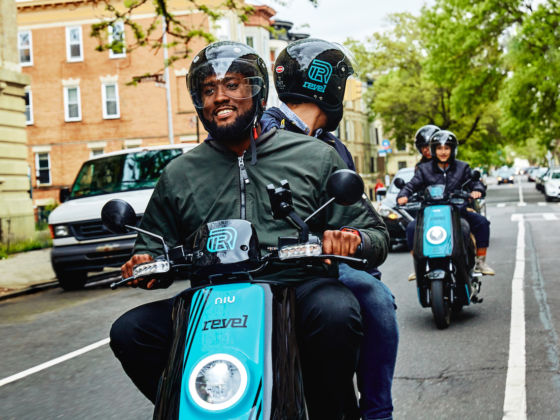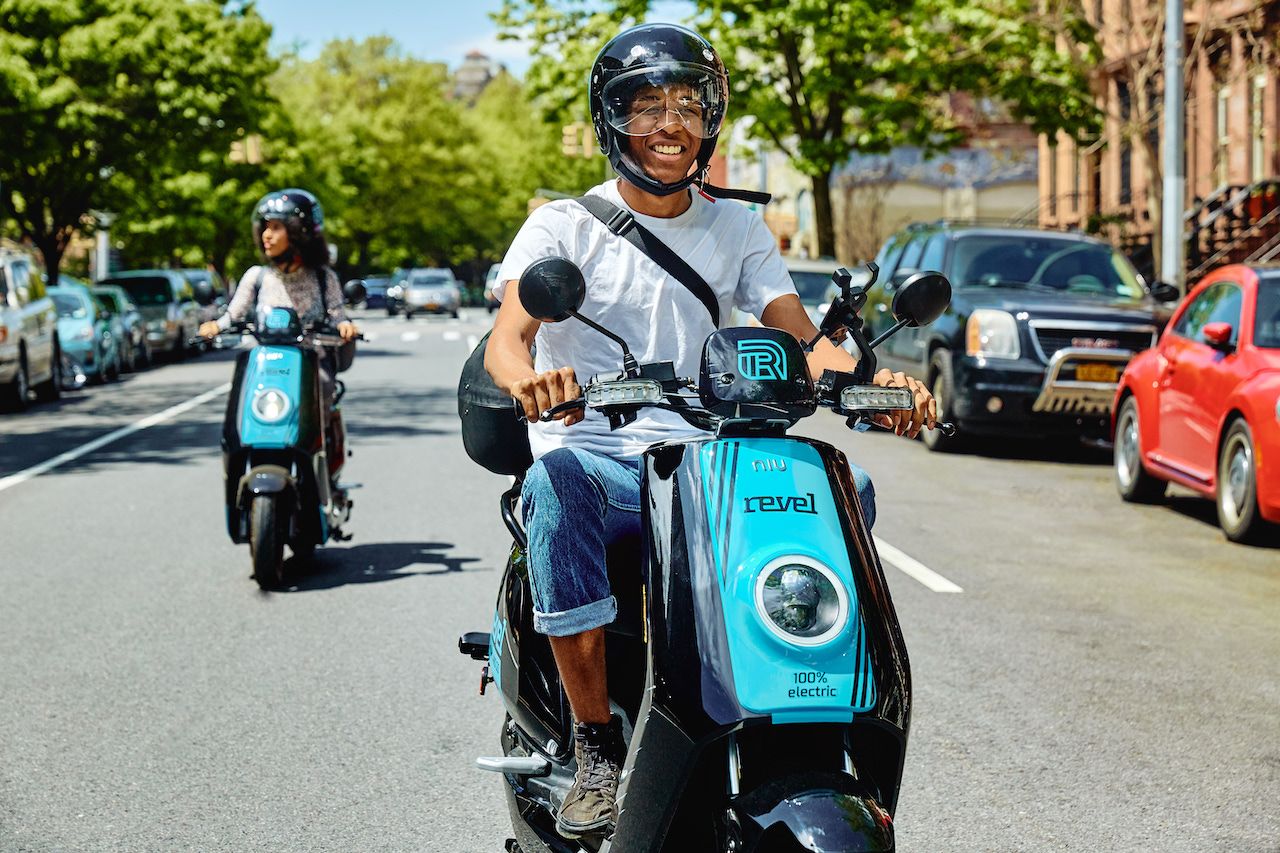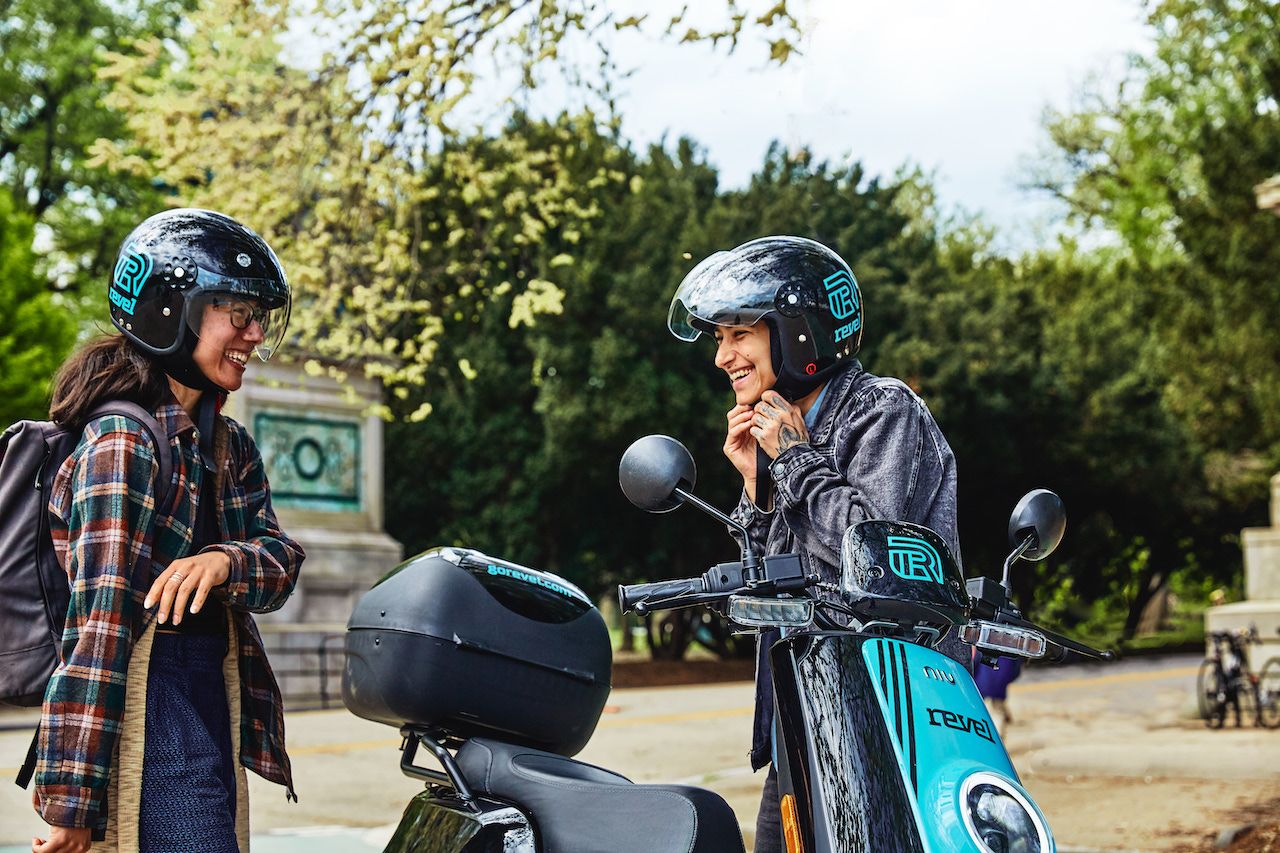New York City’s newest form of transportation looks like something out an advertisement to tour Italy by Vespa. Revel, an app-based electric moped rental company, has covered the streets of Brooklyn and Queens with Mediterranean-blue moped scooters that are equal parts convenient, fun, and yes, risk.
Revel’s mopeds are somewhere between scooters and motorcycles. The mopeds reach up to 30 miles per hour and are street legal, but you can’t take them on highways or major bridges. You don’t need a motorcycle license or any previous motored two-wheel driving experience, but you do need to be 21 or older with a valid driver’s license and a (relatively) clean record. Their larger size means they can’t be piled up on some corner, like the Bird scooters out West. Yet there’s one quality that makes Revel more like a bike share than anything else: all it takes is $19 and about a 15-minute verification over the app to start.


